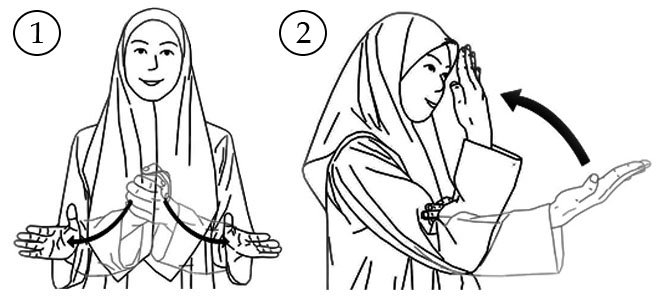People need a communication system to deliver messages to each other. There are two types of communication, which are verbal and non-verbal. In verbal communication, we use voice and articulation; meanwhile in non-verbal communication we do not need them.
What is AAC?
Augmentative and Alternative Communication (AAC) is one type of non-verbal communication. We use AAC to deliver our messages without voicing it out. Facial expression, body gestures, use of pictures, symbols and writing are just a few types of non-verbal communication.
Augmentative communication is used to supplement limited speech, language and communication abilities. Alternative communication on the other hand, is used to replace verbal communication in an individual who is unable to speak.
Who needs AAC?
AAC can help Individuals who have difficulties or are unable to effectively use verbal means of communication to express their needs. Some children and adults with speech, language and communication difficulties rely on AAC to communicate. Among those who may need AAC are individuals with:-
-
Autism
-
Down’s Syndrome
-
Cerebral Palsy
-
Intellectual Challenges
-
Brain Injury
-
Cerebral Vascular Accident / Stroke
Types of AAC
AAC can be divided into two types which are:
-
Unaided AAC
-
Aided AAC
Unaided AAC
-
This type of communications does not require any equipment or support materials. It is totally dependant on the person’s physical ability.
-
For example, people can use sign language, facial expressions and body gestures to express themselves.
 |
|
Sign Language of “Good Morning” Resource:ikhwan-smoothcriminal.blogspot.com |
 |
|
Sign Language: Finger letters Resource: kualalumpurcity.olx.com.my |
Aided AAC
-
Aided AAC requires the use of equipment or support materials to communicate. It can be divided into high technology and low technology aided AAC.
-
Examples of low technology aided AAC include the use of pen and paper (writing system), book and communication board. High technology aided AAC includes devices such as tablet computers, computers and speech generating devices.
Factors to Consider in Choosing an AAC
Some of the factors that need to be considered in the selection of AAC are :-
-
Physical ability
-
Level of speech, language and communication skills
-
Cognitive skills
-
Access to the AAC
-
Individual and family motivation towards AAC usage
-
Socioeconomic status
Speech-Language Therapist in Malaysia can train individuals with speech, language and communication difficulties and their families to use AAC to communicate better with their communities.
References
-
Beukelman, D.R., & Mirenda, P. (2006). Augmentative and alternative communication: supporting children and adults with complex communication needs. (3rd Ed.). Baltimore: Brookes Publishing.
-
Hedge, M.N. (2008). Hedge’s pocket guide to assessment in speech-language pathology. (3rd Ed.). United States; Delmar Learning.
-
Hedge, M.N. (2008). Hedge’s pocket guide to treatment in speech-language pathology. (3rd Ed.). United States; Delmar Learning.
-
Schlosser, R. W., & Wendt, O. (2008). Effects of augmentative and alternative communication intervention on speech production in children with autism: A systematic review. American Journal of Speech-Language Pathology, 17, 212-230. Retrieved May 22, 2012, from PubMed database.
-
Millar, D.C., Light, J.C., & Schlosser, R.W. (2006). The impact of augmentative and alternative communication on the speech production of individuals with developmental disabilities: A research review. Journal of Speech, Language and Hearing Research, 49, 248-264. Retrieved May 22, 2012, from PubMed database.
-
Ganz J.B., Heath, A.K., Parker, R.I., Rispoli, M.J., & Duran, J.B. (2012). A meta-analysis of single case research studies on aided augmentative and alternative communication systems with individuals with autism spectrum disorders. Journal of Autism and Developmental Disorders. 42, 60-74. Retrieved May 22, 2012, from PubMed database.
-
http://kualalumpurcity.olx.com.my/belajar-bahasa-isyarat-di-rumah-iid-89889543 (unable to locate website)
-
http://blog.palsoftwaredesigns.com/index.php?/archives/3-The-iPad-Does-AAC.html (unable to locate website)
| Last Reviewed | : | 28 August 2020 |
| Writer / Translator | : | Rozila bt. Sumardi |
| Accreditor | : | Yong Ennie |
| Reviewer | : | Nadwah bt. Onwi |







